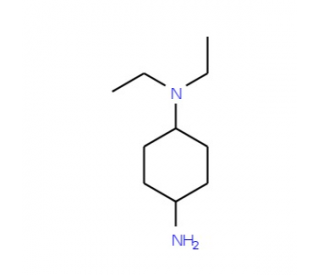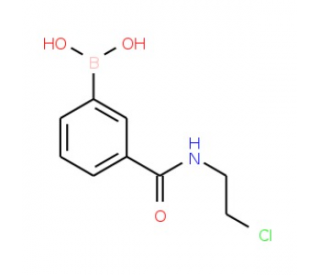详细说明
Species Reactivity
Rat
Specificity
Detects rat beta ‑1,3‑Glucuronyltransferase 1/B3GAT1 in ELISA.
Source
Monoclonal Mouse IgG 1 Clone # 882302
Purification
Protein A or G purified from hybridoma culture supernatant
Immunogen
Mouse myeloma cell line NS0-derived recombinant rat beta ‑1,3‑Glucuronyltransferase 1/B3GAT1
Asp75-Ile347
Accession # NP_445455Formulation
Lyophilized from a 0.2 μm filtered solution in PBS with Trehalose. *Small pack size (SP) is supplied as a 0.2 µm filtered solution in PBS.
Label
Unconjugated
Applications
Recommended
ConcentrationSample
Immunocytochemistry
8-25 µg/mL
See below
Please Note: Optimal dilutions should be determined by each laboratory for each application. are available in the Technical Information section on our website.
Data Examples
Immunocytochemistry | beta ‑1,3-Glucuronyltransferase 1/B3GAT1 in Rat Cortical Stem Cells. beta ‑1,3-Glucuronyltransferase 1/B3GAT1 was detected in immersion fixed differentiated rat cortical stem cells using Mouse Anti-Rat beta ‑1,3-Glucuronyltransferase 1/B3GAT1 Monoclonal Antibody (Catalog # MAB6698) at 10 µg/mL for 3 hours at room temperature. Cells were stained using the NorthernLights™ 557-conjugated Anti-Mouse IgG Secondary Antibody (red; Catalog # ). Oligo2 was also detected in the cells using Human Olig2 Antigen Affinity-purified Polyclonal Antibody (Catalog # ) and NorthernLights™ 637-conjugated Anti-Goat IgG Secondary Antibody (green; Catalog # ). Cells were counterstained with DAPI (blue). Specific staining of B3GAT1 was localized to transmembrane Golgi. View our protocol for . |
Preparation and Storage
Reconstitution
Reconstitute at 0.5 mg/mL in sterile PBS.
Shipping
The product is shipped at ambient temperature. Upon receipt, store it immediately at the temperature recommended below. *Small pack size (SP) is shipped with polar packs. Upon receipt, store it immediately at -20 to -70 °C
Stability & Storage
Use a manual defrost freezer and avoid repeated freeze-thaw cycles.
12 months from date of receipt, -20 to -70 °C as supplied.
1 month, 2 to 8 °C under sterile conditions after reconstitution.
6 months, -20 to -70 °C under sterile conditions after reconstitution.
Background: beta-1,3-Glucuronyltransferase 1/B3GAT1
B3GAT1 is a key enzyme involved in human natural killer-1 (HNK-1) epitope synthesis. It adds a glucuronic residue to the terminal lactosamine residue (Gal beta 1-4GlcNAc-) of a glycoprotein or glycolipid, which can be further sulfated to become the HNK-1 epitope, a unique trisaccharide structure, HSO3-3GlcA beta 1-3Gal beta 1-4GlcNAc- (1, 2). The enzyme activity was found to be enhanced in the presence of sphingomyelin and phosphatidylinositol (3).The HNK-1 carbohydrate epitope is characteristically expressed on a series of cell adhesion molecules in addition to some glycolipids in the extracellular matrix and on the cell surface in the nervous system, where it is involved in cell‑cell and cell‑substratum interaction and recognition during the development of the nervous system (4). Like most known glycosyltransferases, B3GAT1 is a type II Golgi-resident transmembrane protein with a short N‑terminal cytoplasmic domain and a single‑pass transmembrane domain followed by an enzymatic domain in the lumen of Golgi apparatus. The enzyme activity was assayed using a phosphatase-coupled method (5).
References:
Terayama, K. et al. (1997) Proc. Natl. Acad. Sci. USA 94:6093.
Shogo, O. et al. (1992) J. Biol. Chem. 267: 22711.
Kakuda, S. et al. (2005) Glycobiology 2:203.
Bollensen, E. and Schachner, M. (1987) Neurosci Lett. 82:77.
Wu, Z.L. et al. (2011) Glycobiology 21:727.
Long Name:
UDP-GlcUA:glycoprotein beta-1,3-Glucuronyltransferase
Entrez Gene IDs:
27087 (Human); 76898 (Mouse); 117108 (Rat)
Alternate Names:
B3GAT1; beta-1,3-glucuronyltransferase 1 (glucuronosyltransferase P); Beta-1,3-glucuronyltransferase 1; CD57; EC 2.4.1.135; galactosylgalactosylxylosylprotein 3-beta-glucuronosyltransferase 1; GLCATP; GlcAT-P; GLCATPGLCUATP; GLCUATP; glcUAT-P; Glucuronosyltransferase P; HNK1; LEU7; NK1; NK-1; UDP-GlcUA:glycoprotein beta-1,3-glucuronyltransferase











 粤公网安备44196802000105号
粤公网安备44196802000105号